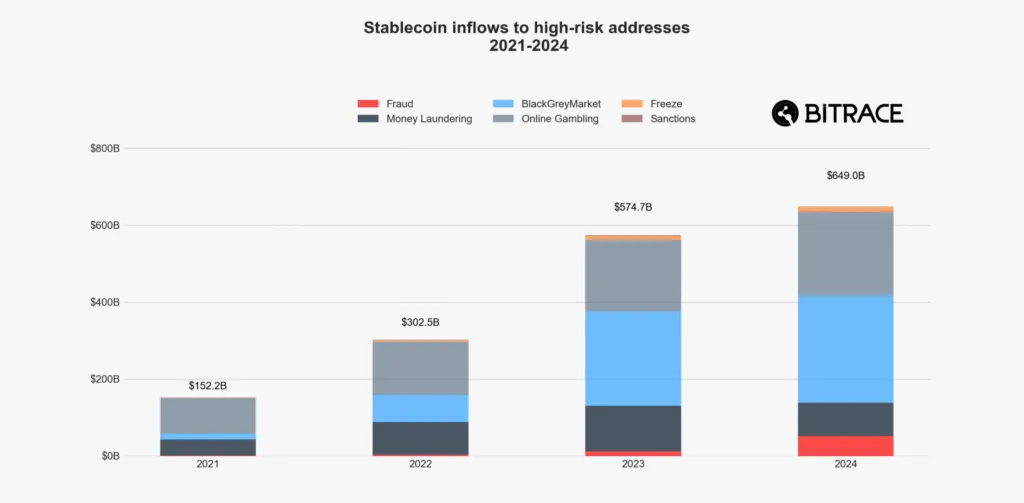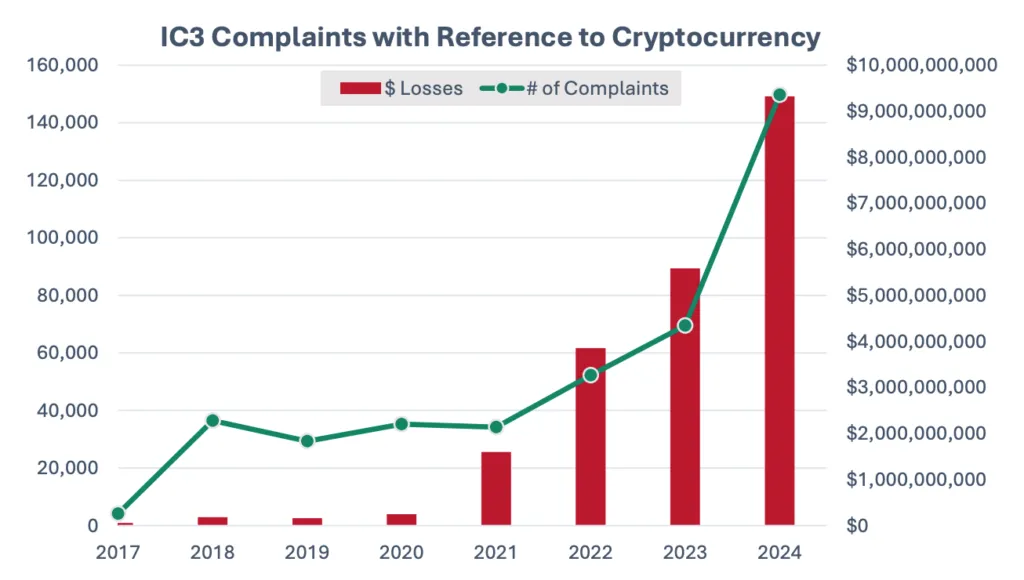|
Getting your Trinity Audio player ready...
|
Italy’s top bank has warned that the increasing intertwining of ‘crypto’ and the financial industry poses a risk to the global economy.
In its “Financial Stability Report,” Banca d’Italia noted that there has been a sharp uptick in investors’ interest in ‘crypto’ since Trump’s election, which led to price rises for most tokens.
“If these instruments were to become more closely entwined with the traditional financial system, there could be greater vulnerabilities for markets and intermediaries,” the bank said.
The Italian regulator is the latest to call out the Trump administration and its entanglement with the ‘crypto’ sector. The American president owns a memecoin project, which, at its prime, was worth $14.8 billion. He has also been replacing regulators who were stringent with the ‘crypto’ sector, such as Securities and Exchange Commission’s Gary Gensler, with appointees who are ready to look the other way. Trump is also pushing for a BTC national reserve and other legislation in Congress that threatens the American financial system.
“The strong growth of Bitcoin and of other crypto-assets with high price volatility means risks not only for investors but also potentially for financial stability, given the growing interconnections between the digital asset ecosystem, the traditional financial sector and the real economy,” the Italian watchdog states.
The top bank called out ‘market participants’ who are rewriting their business models to become crypto-focused. Such firms, led by MicroStrategy (NASDAQ: MSTR), “invest in the belief that BTC can support their share prices, although this exposes them to its marked price volatility.”
Italian firms have jumped aboard the bandwagon as well. In January, the country’s largest bank, Intesa Sanpaolo (NASDAQ: IITSF), purchased $1 million worth of BTC, becoming the first lender to make such a purchase in Italy.
Stablecoins also pose a great threat, the top bank says. Currently, the market is dominated by USDT and USDC, both issued by American firms and pegged to the U.S. dollar. These issuers primarily rely on U.S. government bonds as reserve assets. If any of the issuers failed (and Terra’s disastrous UST stablecoin project has shown they can fail), there would be a run on redemptions, which could destabilize the U.S. bond market.
The Italian central bank echoes the views of several financial leaders globally concerned about Trump’s ‘crypto’ association. In March, European Central Bank (ECB) board member Francois Villeroy de Galhau stated that the U.S. “was sinning through negligence.”
“By encouraging crypto-assets and non-bank finance, the American administration is sowing the seeds of future upheavals,” he stated.
$650 billion in stablecoin volume was linked to crime in 2024: Report
Illicit activity accounted for over 5% of all stablecoin transfers last year, worth nearly $649 billion, a new report has revealed.
The “2025 Crypto Crime Report” by blockchain data analysis firm Bitrace revealed that stablecoin inflow to high-risk addresses (those used by illegal entities) shot up to $75 billion in 2024, year-over-year.

Illicit stablecoin transactions accounted for 5.14% of the total volume last year, a slight dip from 5.94% the year prior, but still a significant jump from 1.63% in 2021.
TRON has maintained its position as the stablecoin crime haven for four years now. Since 2021, USDT on the TRON network has accounted for at least 60% of all illicit volume. In 2024, its dominance was over 80%, with USDT on Ethereum a distant second. USDC on Ethereum represented a fraction of the volume.
TRON’s dominance is notable, especially given that Ethereum holds nearly twice as much stablecoin value. However, TRON has an edge over Ethereum with USDT, holding 47% of the supply to Ethereum’s 45.5%. This slight edge fails to justify TRON’s massive lead on the crime charts.
Breaking down the crimes, money laundering addresses received $86.3 billion in stablecoins last year, a significant drop from the $118 billion received in 2023, the report reveals. Fraud was at $52.5 billion, while black and grey market addresses received $278 billion. Inflows into online gambling addresses shot up 17.5% to hit $218 billion.
Centralized exchanges played a major role in stablecoin crime, allowing the criminals to cash out. Notable players included Justin Sun’s HTX, OKX and Kraken. Notably, Kraken’s share of the crime proceeds was the highest in relation to overall trading volume. While HTX and OKX usually process over $3 billion daily, Kraken records less than $1 billion.
Crypto crime surges
The Bitrace report comes just days after the Federal Bureau of Investigation (FBI) published its Internet Crime Report 2024, which revealed that ‘crypto’ crime shot up in the U.S. last year to account for 56% of all cybercrime.
The bureau received nearly 150,000 complaints about ‘crypto’ crime in 2024, twice as many as in 2023. There was a 66% increase in losses, which hit a staggering $9.3 billion, with victims aged above 60 affected at least twice as much as any other demographic.

‘Crypto’ investment scams were the most common, leading to $5.8 billion losses for investors. Fraud related to ATMs and kiosks doubled last year to hit $247 million, with extortion and tech support being the crimes most associated with the victims.
The report further revealed that Californians were the most targeted, with 20,000 complaints, nearly twice as much as second-placed Texas. Florida was third, just ahead of New York. California’s $1.393 billion in losses was also the highest in the country, twice as high as Texas’ $738 million.
Experts and industry stakeholders are concerned that the crimes could skyrocket under the Trump administration. The Republican leader, to endear himself to the ‘crypto bros‘ that donated millions to his campaign, has been eliminating some of the safeguards that have protected investors for years.
For instance, he scrapped the National Cryptocurrency Enforcement Team last month, whose mandate was to probe and take down ‘crypto’ criminals. This, the Department of Justice (DoJ) said in its memo, would end “regulation by prosecution.”
“Amidst this backdrop of surging crypto crime, the Administration is shifting from being crypto’s referee to its cheerleader,” says Amanda Fischer, the COO of Better Markets, a nonprofit that promotes public interest in the financial sector.
“With crypto crime run amok, Congress should reject efforts to further integrate crypto into Americans’ wallets. Current legislative efforts simply restate existing law—which is clearly not working nor being enforced by the current Administration.”
Despite the concerns, Trump continues to embrace the ‘crypto’ sector, including criminals who had previously been convicted. This includes issuing pardons to BitMEX co-founders Arthur Hayes and Ben Melo, as well as Silk Road founder Ross Ulbricht. The BitMEX pardon wiped out a $100 million fine against the exchange.
Watch | Bitcoin mining in 2025: Is it still worth it?

 08-29-2025
08-29-2025 





